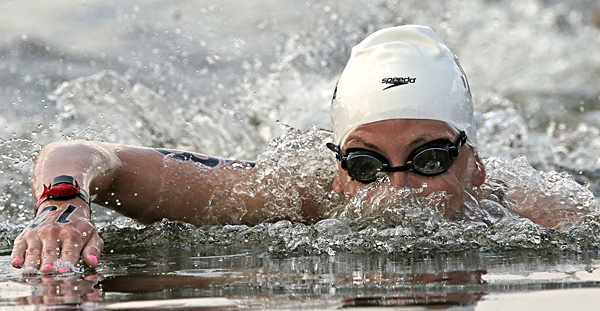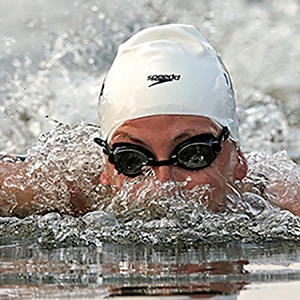
Triathlon races have seen a huge increase in popularity over the last few years. Because the swimming portion is the shortest distance, many athletes new to triathlons don’t prepare adequately for the demands this part of the race requires.
Unlike cycling and running, swimming requires a very different approach to oxygen intake. Athletes who are in great shape may find themselves huffing and puffing after just one lap in the pool, so adequate training is essential.
A triathlon swimmer primarily uses their arms and saves their legs for the cycling and running portions. Think of the swimming portion as your warm up for the rest of the race and extend your arms as you reach for each stroke. This will give your body a great stretch. Here are some other swimming tips:
- Good body position is essential to good swimming. This will ensure smoother swimming and less risk for injuries.
- You want to swim high in the water. Don’t fight your way through the water but try to create the least amount of drag that you can.
- Your head position is very important. Do not swim with your head out of the water or hanging down low in the water. Aim your forehead to be at the water’s surface. Correct head position will help keep your neck and upper back muscles from tightening up and avoids injuries to your neck and spine.
- Make sure that your elbows come up when your arms are rotating. This will avoid drag and undue stress on the ligaments in your shoulders.
- Hands should enter the water in the 11:00 and 1:00 positions to avoid over rotation.
- Keep your core muscles tight. This will keep your hips higher in the water.
- The kicking motion should start at the hips and continue with a slight bend at the knees.
- Keep your mind engaged. Plan out what you will do when you leave the water by visualizing what your bicycle transition looks like and what order you need to do your tasks.
During the race, you may swim in your triathlete gear or even a wetsuit, depending on the weather. You will also most likely have a Velcro strap around your ankle with the timing chip. Don’t wait until the race to swim in this attire, try to recreate it while you practice, you need to get used the feel of it.
Remember to hydrate during practice. Even though you are in the water, you are still perspiring! And practice swimming with others. During a race, you will not have an open lane to yourself. You’ll want to get used to choppy water with others splashing nearby.
Enjoy your training and good luck at your triathlon!






